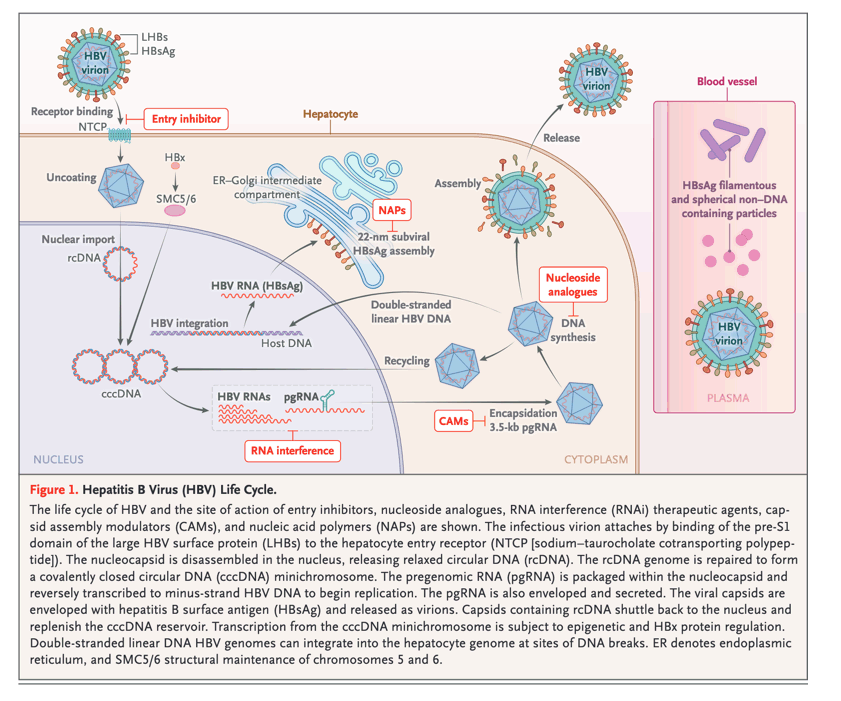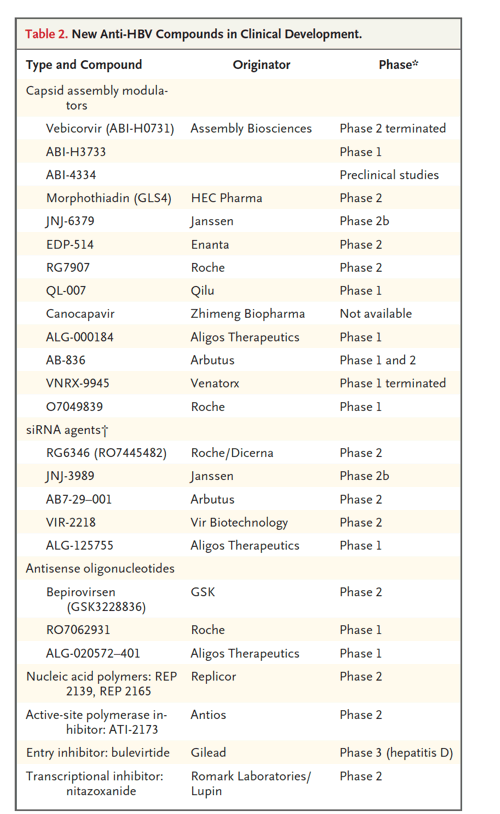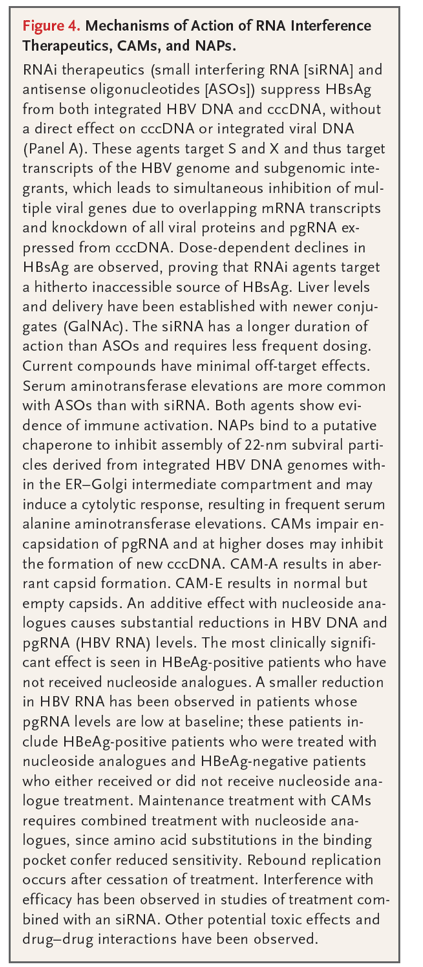| |
New Approaches to Chronic Hepatitis B
|
| |
| |
Download the PDF here
Jan 5 2023 Geoffrey Dusheiko, M.D., Kosh Agarwal, M.D., and Mala K. Maini, M.D., Ph.D
The WHO recommends focused testing for most affected populations (people who inject drugs, men who have sex with men, sex workers, people living with human immunodeficiency virus [HIV], health care workers, migrants from regions where hepatitis B is endemic, and children of HBV-positive mothers), for persons in whom there is a clinical suspicion of chronic viral hepatitis, and for family members or sexual partners of affected persons. General population testing is recommended in areas where the prevalence of HBsAg exceeds 2%. Unfortunately, these programmatic policies have not been implemented in many regions where hepatitis B is endemic and where current interventions will be insufficient to reach 2030 elimination goals.
Conclusions
Prophylactic vaccination alone will not alleviate the burden of hepatitis B. HBV continues to be a widespread cause of death because of inadequate screening, testing, and treatment, as well as late presentation - a major global public health failing. It is critical for agencies to advance affordable diagnostics in order to identify pregnant women and other persons who qualify for treatment. The cost of generic antiviral agents is not a barrier. Lack of community access and referral presents a greater obstacle than the low cost of drugs.
Innovative curative strategies could reshape the treatment of chronic hepatitis B. Maintaining momentum in developing such strategies will require continued investment and patient involvement, as well as a candid realization that the search for a cure for chronic hepatitis B presents myriad challenges.
Current levels of diagnosis and treatment of hepatitis B are inadequate. Approximately 10% of people living with hepatitis B knew their status in 2019. Of this group, only about 6.6 million people with a diagnosis of hepatitis B received treatment in 2019. The WHO African region leads the way in HIV testing and treatment, but by the end of 2019, hepatitis B had been diagnosed in only 2% of the 82 million persons living with hepatitis B in this region and only 0.1% of the currently infected persons had received treatment. While we look beyond current treatments, we should not lose sight of the cardinal responsibility to improve awareness and access to treatment of hepatitis B with existing antiviral therapies.
Chronic hepatitis B is caused by the hepatitis B virus (HBV), a hepatotropic DNA virus that can replicate at high levels and cause minimal disease or severe liver injury. The clinical spectrum of chronic hepatitis B ranges from no symptoms to progressive hepatic fibrosis, advanced cirrhosis, and hepatocellular carcinoma. An estimated 296 million people have chronic hepatitis B, of whom 221 million live in low- and middle-income countries.1 Without intervention, deaths from HBV are expected to peak at 1.14 million by 2035.2




|
|
| |
| |
|
|
|